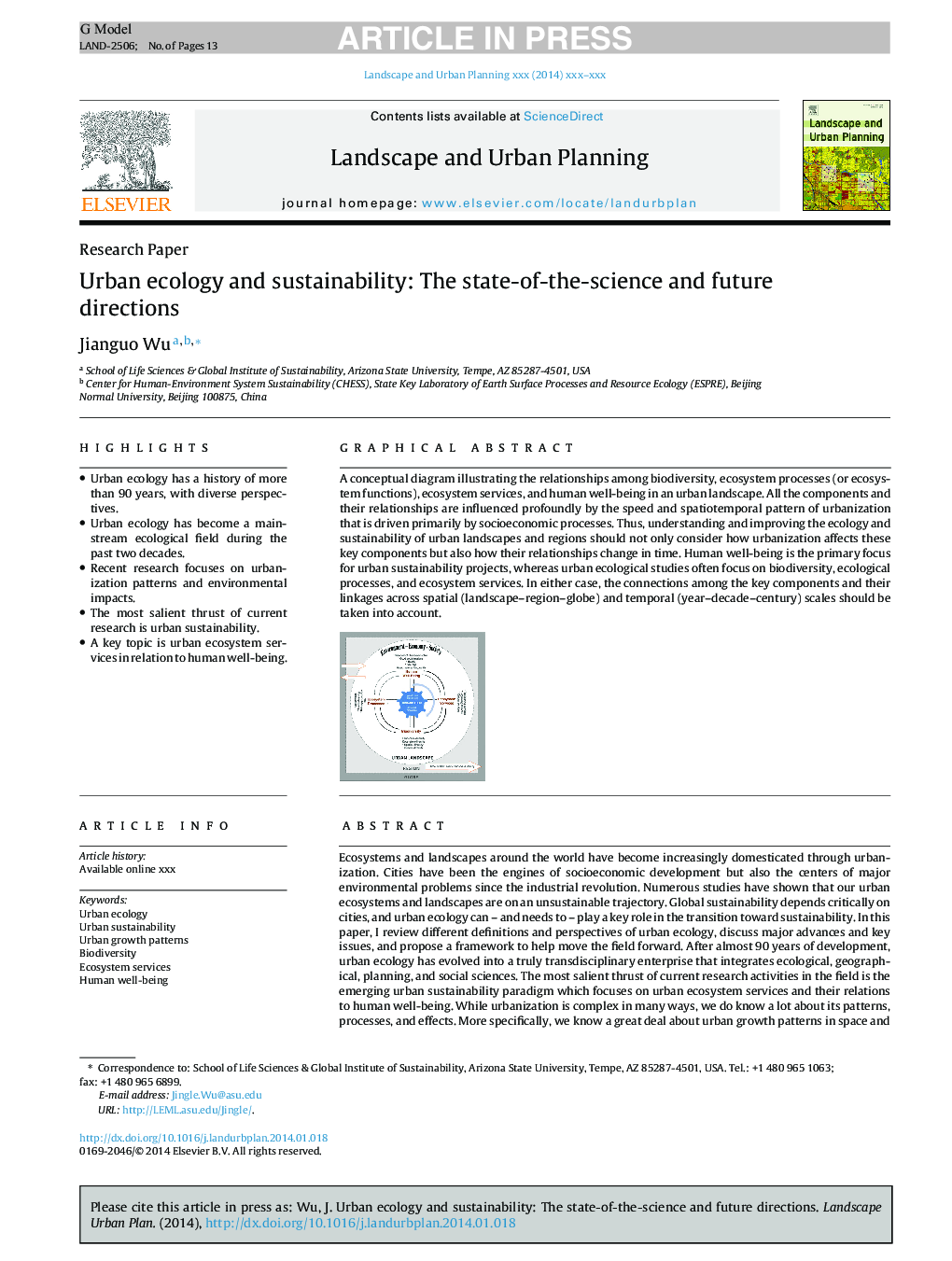| کد مقاله | کد نشریه | سال انتشار | مقاله انگلیسی | نسخه تمام متن |
|---|---|---|---|---|
| 7461595 | 1484633 | 2014 | 13 صفحه PDF | دانلود رایگان |
عنوان انگلیسی مقاله ISI
Urban ecology and sustainability: The state-of-the-science and future directions
ترجمه فارسی عنوان
محیط زیست و پایداری شهری: علم و علم آینده
دانلود مقاله + سفارش ترجمه
دانلود مقاله ISI انگلیسی
رایگان برای ایرانیان
کلمات کلیدی
اکولوژی شهری، پایداری شهری، الگوهای رشد شهری، تنوع زیستی، خدمات محیط زیستی، رفاه بشری،
ترجمه چکیده
یک نمودار مفهومی نشان دهنده روابط میان تنوع زیستی، فرآیندهای اکوسیستم (یا توابع اکوسیستم)، خدمات اکوسیستم و رفاه انسان در یک چشم انداز شهری است. تمام مولفه ها و روابط آنها عمیقا تحت تأثیر الگوی سرعت و زمان فضایی شهرنشینی قرار می گیرند که عمدتا به وسیله فرایندهای اجتماعی و اقتصادی هدایت می شود. بنابراین، شناختن و بهبود محیط زیست و پایداری مناظر و مناطق شهری باید نه تنها در نظر بگیرد که چگونه شهرنشینی بر این مولفه ها تاثیر می گذارد، بلکه چگونه روابط آنها در زمان تغییر می کند. رفاه انسانها تمرکز اصلی برای پروژه های پایداری شهری است، در حالی که مطالعات اکولوژیکی شهری اغلب بر تنوع زیستی، فرآیندهای زیست محیطی و خدمات اکوسیستم تمرکز می کنند. در هر صورت، ارتباطات میان مولفه های کلیدی و ارتباطات آنها بین مقیاس های فضایی (منطقه چشم انداز منطقه ای) و مقیاس زمانی (دهه های پاییز) باید مورد توجه قرار گیرد.
موضوعات مرتبط
علوم زیستی و بیوفناوری
علوم کشاورزی و بیولوژیک
بوم شناسی، تکامل، رفتار و سامانه شناسی
چکیده انگلیسی
A conceptual diagram illustrating the relationships among biodiversity, ecosystem processes (or ecosystem functions), ecosystem services, and human well-being in an urban landscape. All the components and their relationships are influenced profoundly by the speed and spatiotemporal pattern of urbanization that is driven primarily by socioeconomic processes. Thus, understanding and improving the ecology and sustainability of urban landscapes and regions should not only consider how urbanization affects these key components but also how their relationships change in time. Human well-being is the primary focus for urban sustainability projects, whereas urban ecological studies often focus on biodiversity, ecological processes, and ecosystem services. In either case, the connections among the key components and their linkages across spatial (landscape-region-globe) and temporal (year-decade-century) scales should be taken into account.
ناشر
Database: Elsevier - ScienceDirect (ساینس دایرکت)
Journal: Landscape and Urban Planning - Volume 125, May 2014, Pages 209-221
Journal: Landscape and Urban Planning - Volume 125, May 2014, Pages 209-221
نویسندگان
Jianguo Wu,
